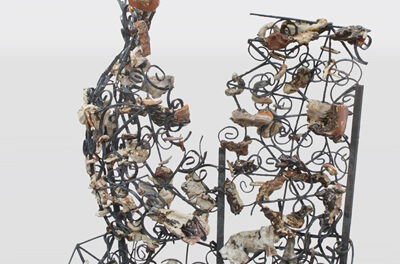On March 30, Donald Portnoy stepped onto the podium before the Brevard Philharmonic for a thrilling afternoon of music and acrobatics at the Porter Center of Brevard College. The Cirque de la Symphonie performers added a new level of excitement. Between juggling, contortions, magic, hoops, and a mesmerizing display of strength and balance, they transported the audience to another world full of exotic creatures. All this while we still were being enraptured by the echoing choruses of familiar orchestral works.
The Cirque de la Symphonie company is a troupe of veteran Cirque performers who travel to various orchestras across the nation, performing well-choreographed routines to classical and contemporary works. The performers featured for the Brevard Philharmonic’s concert ranged from a dazzling contortionist to a goofy clown who likes to juggle. They executed their routines with the perfect balance of tension and release, keeping members of the audience on the edge of their seats.
Something that was very well-planned about the concert was the fact that the performances alternated between just orchestra and the Cirque performers. Furthermore, the pieces that accompanied the routines were familiar orchestral works, so the audience was not overwhelmed with aural and visual stimulation. Onlookers were free to enjoy the talent of the Cirque performers without the strain of comprehending unfamiliar, complex symphonic works.
Opening the spectacle was a very fitting Dvořák’s “Carnival” Overture, Op. 92. This rousing piece set the stage for the amazing artists to follow. The Brevard Philharmonic did an excellent job portraying the blend of excitement and mystery that the piece demands. Immediately following the opener, a quirky character garbed in an orange body-suit and a white mask perched atop the head trotted out onto the stage. Thus began the thrilling ride of the afternoon. He juggled three, then four, and onward to six balls in the air to Bizet’s “Danse Bohème” (Gypsy Song) from the Carmen Suite No. 2. What was particularly fascinating about his routine was how the plain white mask created a new dynamic of talent. Instead of being on the face like a normal mask is worn, it was placed on the crown of the head, forcing the performer to stare at the ground. It created an almost reptilian illusion with the head snaking and coiling around. It also added an element of difficulty to the juggling, since he could not look up at what he was juggling.
Following the juggler’s act was a very strong man who spun a metal frame and then a cube to Bizet’s “Les Toréadors” from the Carmen Suite No. 1. The performer danced in and out of the square frame, which was soon replaced by a cube that he seemed to traverse with ease. The cube spun high and low with the illusions of sides multiplying into the shape of a hexagonal prism. At the very end, he balanced a corner perfectly in the palm of his hand, with the cube appearing to float in a slow circle.
A contortionist, quick change artist, and the familiar juggler returned to the stage for an exciting “electric” juggling act, in which the lights across the hall and stage dimmed and five LED balls went flying through the air. Then the juggler switched to a bright Chinese yo-yo that danced and darted across the darkness.
Returning to the stage for the grand finale was the cube balancer. However, this time he was accompanied by a large metal ring, called a Cyr wheel. He spun, rolled, and wobbled around the stage to Leonard Bernstein’s Overture to Candide, receiving uproarious applause from the audience. The way he and the large hoop danced across the stage appeared effortless, as though he were in a perpetual state of motion that required astounding amounts of strength, support, and balance. It was the perfect final performance before the curtain call, the “Comedians’ Galop” from The Comedians by Kabalevsky.
The Brevard Philharmonic displayed exceptional blend and balance on their feature pieces, with dynamics soaring to proud fortissimos and dipping into whispering pianissimos on select occasions. While the program was well planned to accommodate the performers, all the musical selections were fairly strong dynamically, with brisk tempi or rapid passages to give the illusion of quick movement. While this created the atmosphere of being in a circus, it created almost a sense of urgency about the entire concert, which gave little room for listeners to absorb the music. Once one piece was done, the next started almost immediately. The volume and intensity mixed with the rapid-fire transitions between pieces left little room for listeners to calm down and breathe!
Overall, the concert was enthralling. The new dynamic created by the visual performances added a depth and character to many familiar orchestral works. This is a performance I would love to see again in the future.












